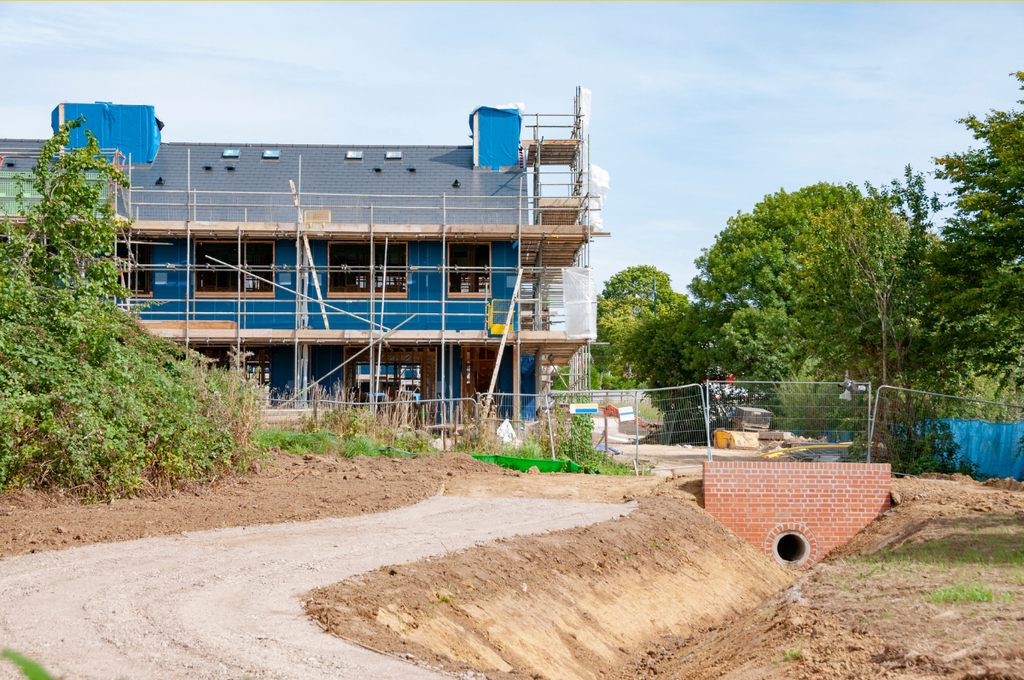
Lies, damn lies, and Homes England statistics
For all those who are baffled as to how the UK government will meet its target of building 1.5 new homes during its five-year life, a form of enlightenment may come from the latest statistics provided by Homes England, which supposedly ‘delivers’ new homes across the country, writes Paul Finch.
HE’s latest triumphalist Press Release states that provisional figures for 2024/25 show that the organization has ‘surpassed’ its annual targets for new homes started, completed and ‘unlocked’ as the result of, for example, site purchases.
The problem for any disinterested observer is the definition of ‘delivered’. Another way of interpreting the figures is that, as usual, Homes England has ‘delivered’ nothing whatsoever, since it is totally reliant on third parties to do the messy business of actually building anything – and is essentially a conduit for public money which allows the government to claim it is ‘doing something’ about the critical UK housing shortage.
Hence the ludicrous claim by the latest housing minister (based on recent years he will last about nine months in the job), that his government’s ‘Plan for Change’ will ‘deliver the biggest increase in social and affordable housing in a generation’. This can only be true in the sense that the last generation has seen a pitiful quantum of new homes, bearing in mind massive net inward migration, demographic change involving increased longevity, and the trend towards many more small households.
The magnificent total of completions, by the way, is 36,000, against a total desired target of 300,000. Let’s hear what an independent observer thinks of that, in the form of the chief economist at the UK Building Cost Information Service, David Crosthwaite:
‘While the Homes England starts and completions data are relatively positive, they are a drop in the ocean in terms of the new homes that need to be delivered if the government is going to get anywhere near its target.
‘Achieving 1.5 million new homes by the end of this Parliament requires sustained delivery of around 300,000 new homes annually and the Homes England figures cited represent just over 10 per cent of the new homes needed to reach that target.
‘The target was always unrealistic given that the government doesn’t control the supply of housing. That’s down to the housebuilders and they are profit maximisers, which means they very carefully control the supply of new homes to maintain price levels.
‘The long-term average for new homes completions is around 240,000 homes per year, so the likelihood is that the government will fall short of their target by about 300,000 homes.’
The abject failure to building enough housing for a growing population, since the early 1980s, is not the fault of Homes England. Using it as a financial conduit, like its predecessors the Homes & Communities Agency, English Partnerships and the Housing Corporation, has allowed this government, along with its own predecessors, to pretend that they are playing an active role in getting housing built, when the reality is quite the opposite. It is always the responsibility of somebody else; Whitehall will help out with some cash, so long as it does not get its hands dirty.
Cross-party dishonesty can be explained, according to the cynical, by different but connected attitudes of the main political parties to the British working class. That class as a whole are not, and never have been, in a position to become house-owners (except for some as a result of Margaret Thatcher’s right-to-buy council homes policy, stolen from a Labour Party too frightened to implement it). Cynics say the Conservatives despise the working class, while Labour, especially New Labour, are embarrassed by them.
This might explain the near-zero completion figures for social housing delivered by public authorities since the early 1980s, which show little sign of reviving, despite the sterling efforts of some individual authorities, especially in London. In general terms, completions have been a drop in an ocean of increasing demand.
So up pops Mayor Sadiq Khan, London’s Opportunist-in-Chief, who has suddenly decided that it is ok to build homes on London’s Green Belt, otherwise known as Metropolitan Open Land. In the past, Khan and his London Plans have been completely opposed to such development, and the mayor, via his Greater London Authority, has wasted millions of pounds of housebuilder time and money in fighting planning refusals based on this policy.
Now that a Labour government is spouting support for mass housebuilding as part of a growth programme, Khan (praised by deputy prime minister Angela Rayner for his change of heart) is claiming that London cannot achieve its 88,000 homes a year required building target simply relying on the use of ‘brownfield’ (ie previously developed) site. So let’s build on Green Belt. This untested proposition has not been accompanied by any suggestion about who exactly will build the necessary homes – bearing in mind that the population of London has increased in 30 years from 6.5 million to getting on for 9 million, with a million more to come in the next decade.
Politicians simultaneously in denial about inward migration on the one hand, and housing finance and construction on the other, are not an appetising prospect given the realities of housebuilding delivery. We continue to penalise the only people who provide housing at scale, ie volume housebuilders, via Community Infrastructure Levy payments and affordable housing impositions, while failing to provide a serious public housing delivery body, like, for example, the Singapore Housing & Development Board.
Neither fish nor fowl, our public authorities will continue floundering. The only real increase in the housing statistics will be the homeless at one end of the scale, and on the other the wealth of rentiers exploiting the vulnerable – who have little chance of getting on the ladder for decent housing in what is supposed to be a first-world country.
Founder Partner






